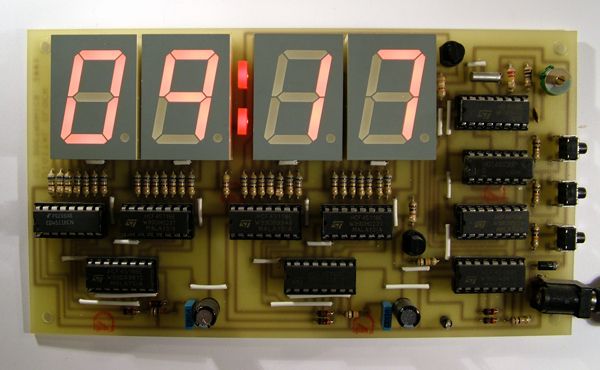Summary of How Digital Clocks Work
The article explains the fundamental components required for all clocks, whether mechanical or digital. Both types need a power source, an accurate timebase, a mechanism to break down time into hours, minutes, and seconds, and a way to display the time. In pendulum clocks, these roles are fulfilled by weights/springs, the pendulum and escapement, gears, and clock hands with a face. Digital clocks replace mechanical parts with electronic equivalents, using batteries or AC power, an electronic timebase, counters for timing division, and displays like LEDs or LCDs.
Parts used in the Digital Clock:
- Electrical power supply (battery or 120-volt AC power)
- Electronic timebase
- Counter (for electronic gearing)
- LED display or LCD display
The Basics
If you have read How Pendulum Clocks Work, you know that all clocks (regardless of technology) have a few required components:
- A source of power to run the clock
In a pendulum clock, the weights or the springs handle this role.
- An accurate timebase that acts as the clock’s heartbeat
In a pendulum clock, the pendulum and escapement handle this role. - A way to gear down the timebase to extract different components of time (hours, minutes, seconds)
In a pendulum clock, gearsserve this role. - A way to display the time
In a pendulum clock, the hands and face serve this role.
A digital clock is no different. It simply handles these functions electronically rather than mechanically. So in a digital clock, there is an electrical power supply (either a battery or 120-volt AC power from the wall). There is an electronic timebase that “ticks” at some known and accurate rate. There is an electronic “gearing mechanism” of some sort — generally a digital clock handles gearing with a component called a “counter.” And there is a display, usually either LEDs (light emitting diodes) or an LCD (liquid crystal display).
For more detail: How Digital Clocks Work

